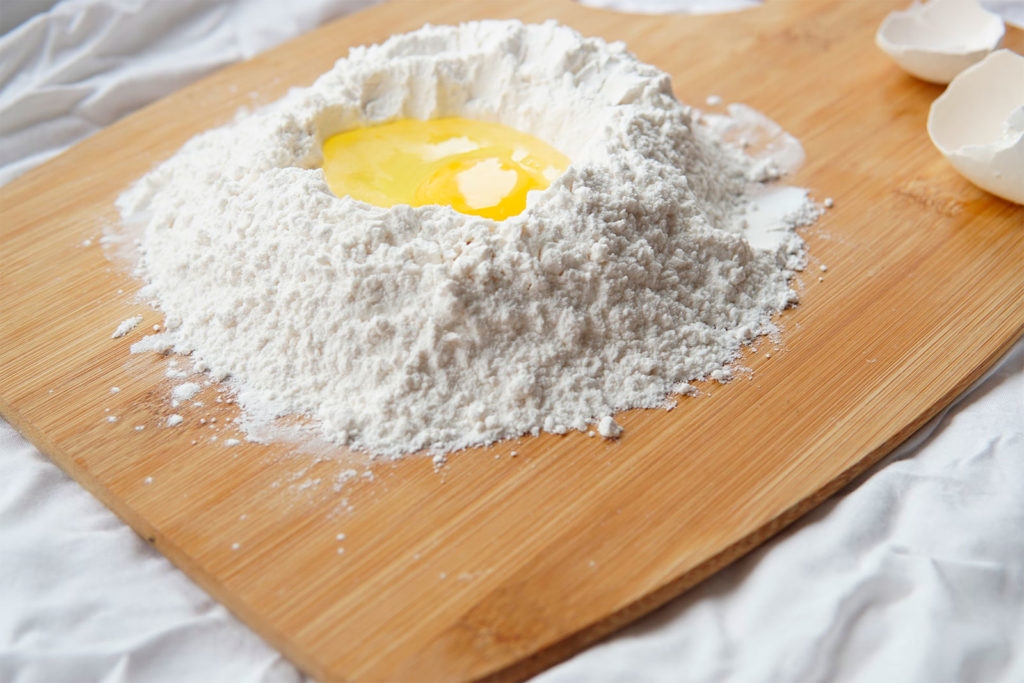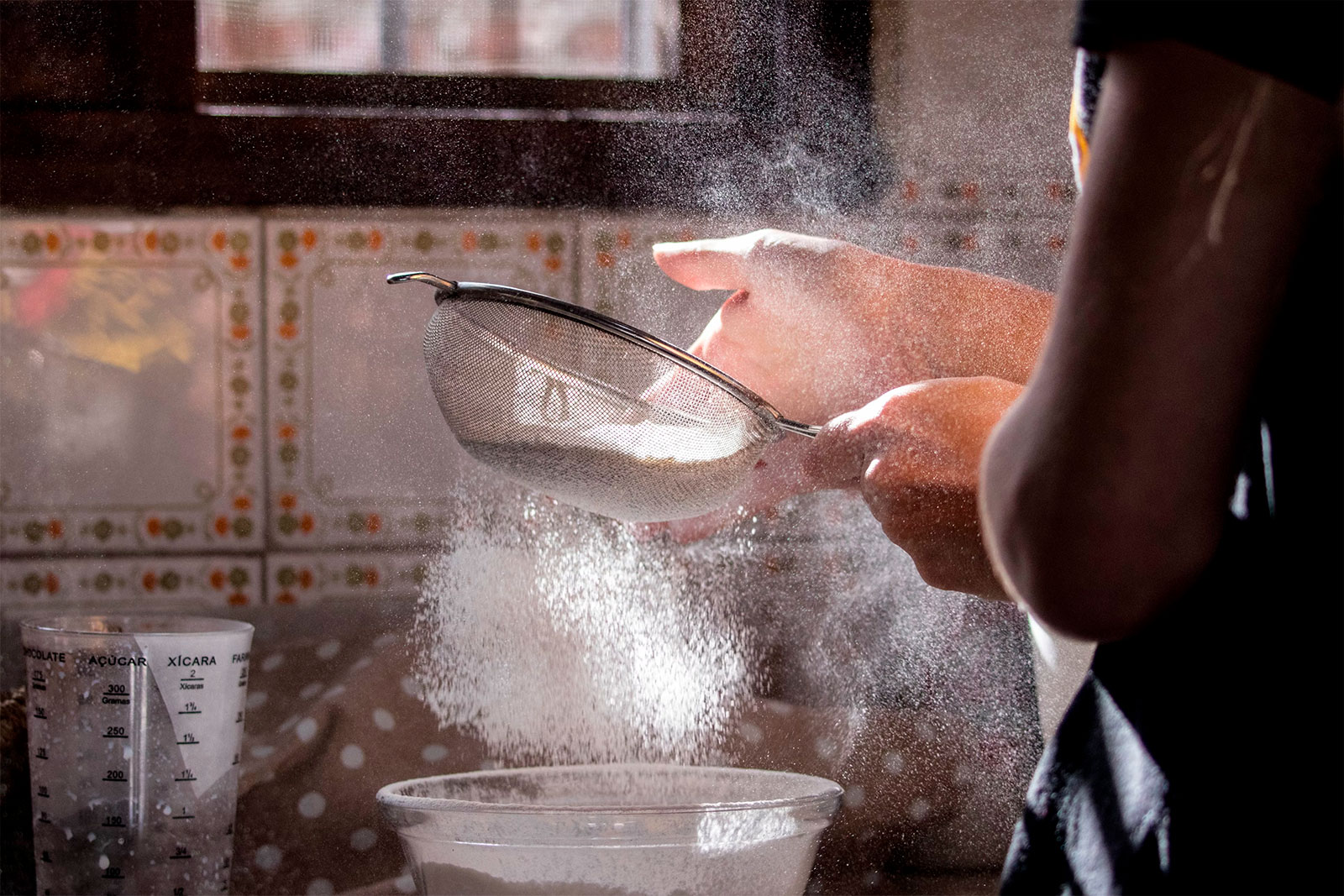Learn how French flour types differ by number and usage. Get practical tips for cooking and baking in France with accurate conversions and data.
Why French flour is different from others
French flour is classified differently than flour in the UK or the US. The system used in France is based on the amount of ash that remains after burning a sample of flour. This ash content determines the “Type” number printed on the flour bag. For example, Type 55 flour (T55) contains 0.50–0.60% ash, which means it is more refined and contains fewer bran particles. This classification helps bakers choose the right flour for specific uses.
In contrast, American flour is labeled according to protein content and general use: all-purpose, cake, bread, etc. British flour tends to follow a similar approach, though some artisan flours use ash content now too.
French flour has a lower gluten and protein content than American flour. For example, T45 and T55 flours typically contain between 9% and 10.5% protein, while US all-purpose flour often contains around 11.7%.
This difference has a direct impact on baking results. Lower protein flours absorb less water and create more tender textures, which is ideal for pastries, cakes, and baguettes. For bread with a strong structure, higher protein flours are more appropriate.

Understanding the French flour classification: T45 to T150
T45 and T55: white flours for pâtisserie and bread
T45 (Type 45) is a finely milled, soft wheat flour. It is ideal for pâtisserie and delicate pastries like brioche, choux, and croissants. It creates a light, soft texture because it contains very little bran and germ. Its ash content is approximately 0.45%, and protein ranges from 8% to 9.5%. It is widely used in bakeries in Île-de-France and Lyon.
T55 (Type 55) is the most commonly used flour in French homes. It is often referred to as “farine blanche“. It works well for baguettes, crêpes, tarts, and pizza dough. It contains a slightly higher ash content, around 0.55%, and typically 9.5% to 10.5% protein. A 1 kg bag costs around 1.30€ (£1.10 / $1.40).
Both T45 and T55 absorb less water than US all-purpose flour, so when substituting in recipes, it’s necessary to reduce the liquid slightly.
T65: for rustic bread
T65 flour has more of the bran and germ retained, making it a semi-white flour. It is often used for pain de campagne, baguette tradition, and rustic loaves. It has an ash content of around 0.62%, and protein can reach 11%.
It creates bread with a slightly more open crumb and chewy crust, but less so than T80 or T110. It costs about 1.60€ per kilo (£1.40 / $1.70) and is popular in Brittany and Provence for traditional home baking.
T80 to T150: wholemeal and integral flours
T80 is considered bise flour, meaning semi-wholemeal. It is suitable for darker, denser breads. T80 retains more fibre and nutrients but still bakes well. The protein level ranges from 11.5% to 12%. It is often used in artisan boulangeries in regions like the Dordogne.
T110 and T130 are wholemeal flours used for rustic, wholegrain breads. They contain higher ash content (1.10% to 1.30%) and more bran. This can affect dough elasticity, so longer fermentation or autolyse is often used.
T150 is the integral or whole wheat flour. It includes all parts of the grain. It is rich in minerals and fibre but requires careful handling. Its price is about 2.10€ per kilo (£1.80 / $2.30) and is mostly used in bio or organic baking.
Common types of French flour and their uses
| Type | Ash % | Common Use | Protein |
|---|---|---|---|
| T45 | 0.45% | Cakes, brioche, pastries | 8–9.5% |
| T55 | 0.50–0.60% | Baguettes, crêpes, tart dough | 9.5–10.5% |
| T65 | 0.62% | Rustic bread, pizza | 10.5–11% |
| T80 | 0.75% | Pain bise, artisan bread | 11–12% |
| T110 | 1.10% | Wholegrain bread | 11.5–12.5% |
| T150 | 1.50% | Integral bread, fibre-rich baking | 12–13% |
Each type has a specific purpose. Using the wrong type often results in poor texture or dough consistency. For example, using T45 for bread can cause the loaf to collapse or feel overly soft. T150 in cakes will make them too heavy and gritty.
French flour vs UK and US flour: conversions and equivalents
There is no direct 1:1 match between French and UK or US flour, but general equivalencies help.
- French T55 is close to UK plain flour or US all-purpose flour, though slightly less protein.
- T65 approximates strong white bread flour in the UK, but still lower gluten.
- T45 has no real UK/US equivalent. It is softer than US cake flour.
When cooking in France, it’s better to use local types to get the expected result. Substituting T45 with cake flour might work, but results can vary. T150 is harder to replace since US whole wheat flour often contains more bran particles, making the final product even denser.
Bakers often blend flours to achieve specific hydration levels or textures. A mix of T65 and T80 is used for sourdoughs in Loire Valley boulangeries. T110 and rye flour are commonly mixed in Alsace.
Special types: Spelt, rye, and organic flours in France
France offers several alternative flours labeled with the same type numbers. For example, farine d’épeautre (spelt flour) can be found as T65 or T80. It contains less gluten and has a nutty flavour. Rye flour (farine de seigle) is also classified from T70 to T170. Rye bread is popular in Alsace and Savoie.
Organic flour (farine bio) must meet specific standards (AB label). It is often stone-ground and costs 20–30% more than conventional flour. A 1 kg bag of organic T80 spelt flour can reach 3.50€ (£3.00 / $3.80).

Buying flour in France: prices, brands and availability
Most French supermarkets sell T45, T55, and T65 in 1 kg or 5 kg bags. Prices range from 1.00€ to 2.00€ depending on the brand. Some of the most common brands are Francine, Intermarché Bio, and Mon Fournil.
Artisan flours (T80 and above) are available at moulins, organic shops, or local cooperatives. For example, Moulin de Colagne in Lozère produces a range of T65 to T150 organic flours, stone-milled from regional wheat.
Professional flours sold in 25 kg sacks are used by boulangeries. Brands like Minoterie Suire, Les Moulins de Brasseuil, and Minoterie Viron offer flours with specific gluten levels and strengths adapted for long fermentations, cold-proofing, or lamination.
Cook in France is your gateway to French cuisine and gastronomy in France. Get in touch for your next cooking workshop.
